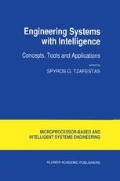Abstract
Every management action or lack of action can affect the financial health of a business. Unfortunately, it is very difficult to predict whether effects will be financially positive, negative, or neutral over the following weeks, months or years. Generally change costs money which is expected to be returned over a time span by efficiencies resulting from the changes. If the changes temporarily cause greater inefficiencies than anticipated, the result may be bankruptcy. Such disastrous consequences usually result from a failure to gather and communicate appropriate cost information within the organization.
Access this chapter
Tax calculation will be finalised at checkout
Purchases are for personal use only
Preview
Unable to display preview. Download preview PDF.
Bibliography
Altman, Edward, B.G. Haldeman, and P. Narayanan. “Zeta Analysis: A New Model to Identify Bankruptcy Risk to Corporations”. Journal of Banking & Finance, 1 (June, 1977), 29–54.
Chase, R.B. and N.J. Aquilano. Production and Operations Management. Illinois: Richard D. Erwin, Inc., 1985.
Choobineh, F. “Economic Justification of Flexible Manufacturing Systems.” Computers in Engineering - 1986, Vol. 2, pp. 109–175.
Dillmann, R. “Modular Computer Controls for Manufacturing Equipment.” Advanced CREST Course on Computer Integrated Manufacturing. Germany: Karlsruhe, 1983, pp. 267–328.
Doumeingts, Guy. “Methodology to Design Computer Integrated Manufacturing and Control of Manufacturing Unit.” Advanced CREST Course on Computer Integrated Manufacturing. Germany: Karlsruhe, 1983, p. 194–262.
Hall, Roger I. “Simple Techniques for Constructing Explanatory Models of Complex Systems for Policy Analysis.” Dynamics, Vol. 4, No. 3, 1978, pp. 103–114.
Hall, Roger I. “Course Notes for 27:704.” University of Manitoba, September 1985.
Koeing, Daniel T. “The Sixth Step: Data Collection in Manufacturing.” Mechanical Engineering, May 1986, pp. 44–46.
Leimkuhler, Ferdinand F. “Economic Analysis of CIM.” Advanced CREST Course on Computer Integrated Manufacturing. Germany: Karlsruhe, 1983, pp. 453–482.
Richardson, George and Alexander Pugh III. Introduction to System Dynamic Modelling with Dynamo Massachusetts: The MIT Press, 1981.
Scalpone, Russell W. “Education Process is Vital to Realization of CIM Benefits, Handling of Pitfall.” Industrial Engineering, Vol. 16, No. 10, Oct. 1984, pp. 110–111, 113–114, 116.
Scheer, A.W. “Production Control and Information Systems.” Advanced CREST Course on Computer Integrated Manufacturing. Germany: Karlsruhe, 1983, pp. 138–178.
Urban, Peter. “Group Technology: One Step Closer To Integration.” CAD/CAM & Robotics, October 1986, pp. 16–20.
Warndorf, P.R. and Merchant, M.E. “Development and Future Trends in Computer-Integrated Manufacturing in the USA.” Int. J. Technology Management, Vol. 1, Nos. 1/2, 1986, pp. 161–178.
Yonemoto, K. “Robotization in Japan - an Examination of the Socio-Economic Impacts of Industrial Robots.” Int. J. Technology Management, Vol. 1, Nos. 1/2, 1986, pp. 179–196.
Yu, Chen-O The Use of ‘ZETA’ Analysis in a Simulation Model to Study the Economic Benefits of Computer Integrated Manufacturne. 1988, Thesis, Masters of Science in Industrial Engineering, University of Manitoba Winnipeg, MB, R3T 2N2, CANADA.
Author information
Authors and Affiliations
Editor information
Editors and Affiliations
Rights and permissions
Copyright information
© 1991 Springer Science+Business Media Dordrecht
About this chapter
Cite this chapter
Thornton-Trump, A.B., Yu, E.CO., Hawaleshka, O. (1991). Simulation of the Introduction of Computer Integrated Manufacturing. In: Tzafestas, S.G. (eds) Engineering Systems with Intelligence. Microprocessor-Based and Intelligent Systems Engineering, vol 9. Springer, Dordrecht. https://doi.org/10.1007/978-94-011-2560-4_61
Download citation
DOI: https://doi.org/10.1007/978-94-011-2560-4_61
Publisher Name: Springer, Dordrecht
Print ISBN: 978-94-010-5130-9
Online ISBN: 978-94-011-2560-4
eBook Packages: Springer Book Archive

